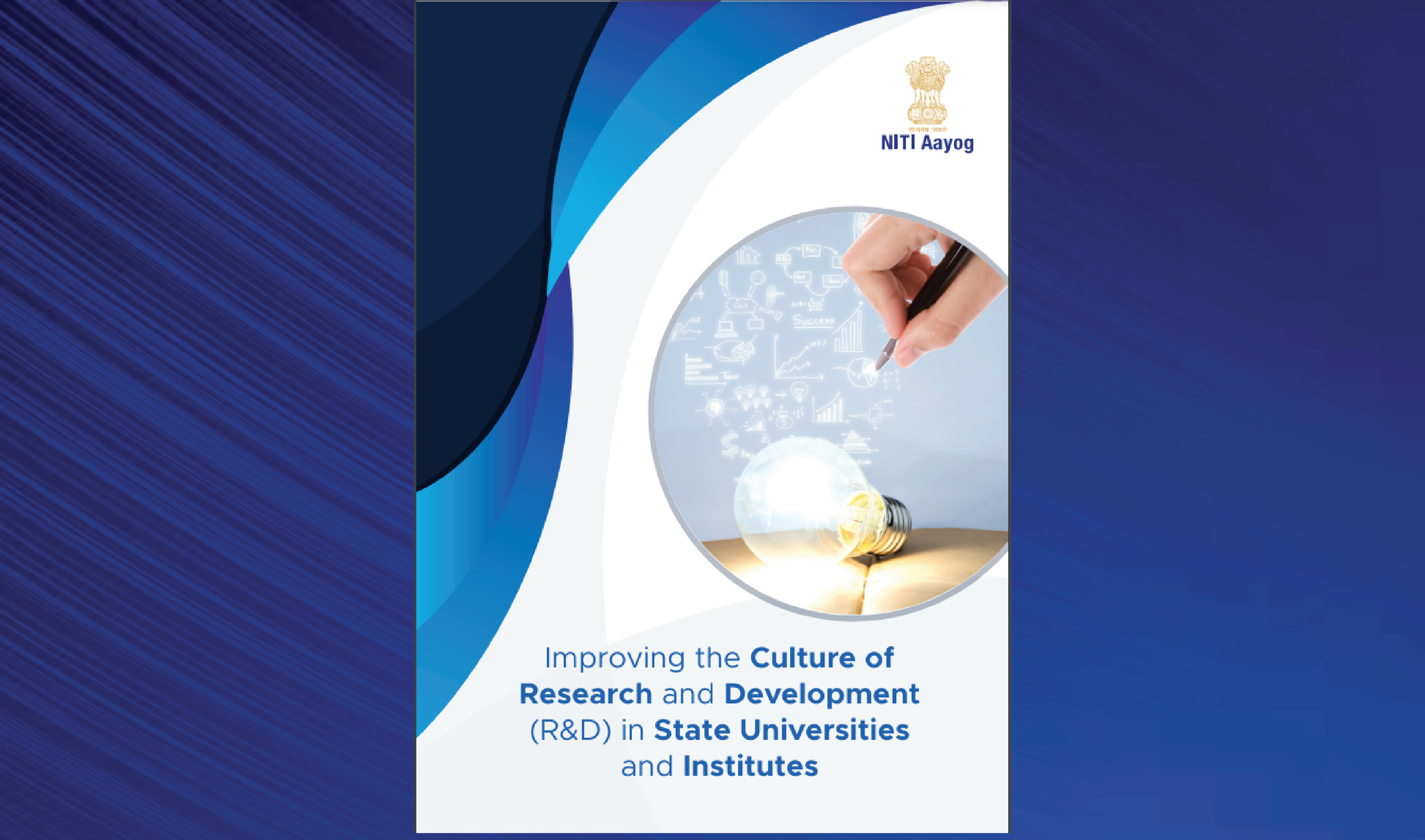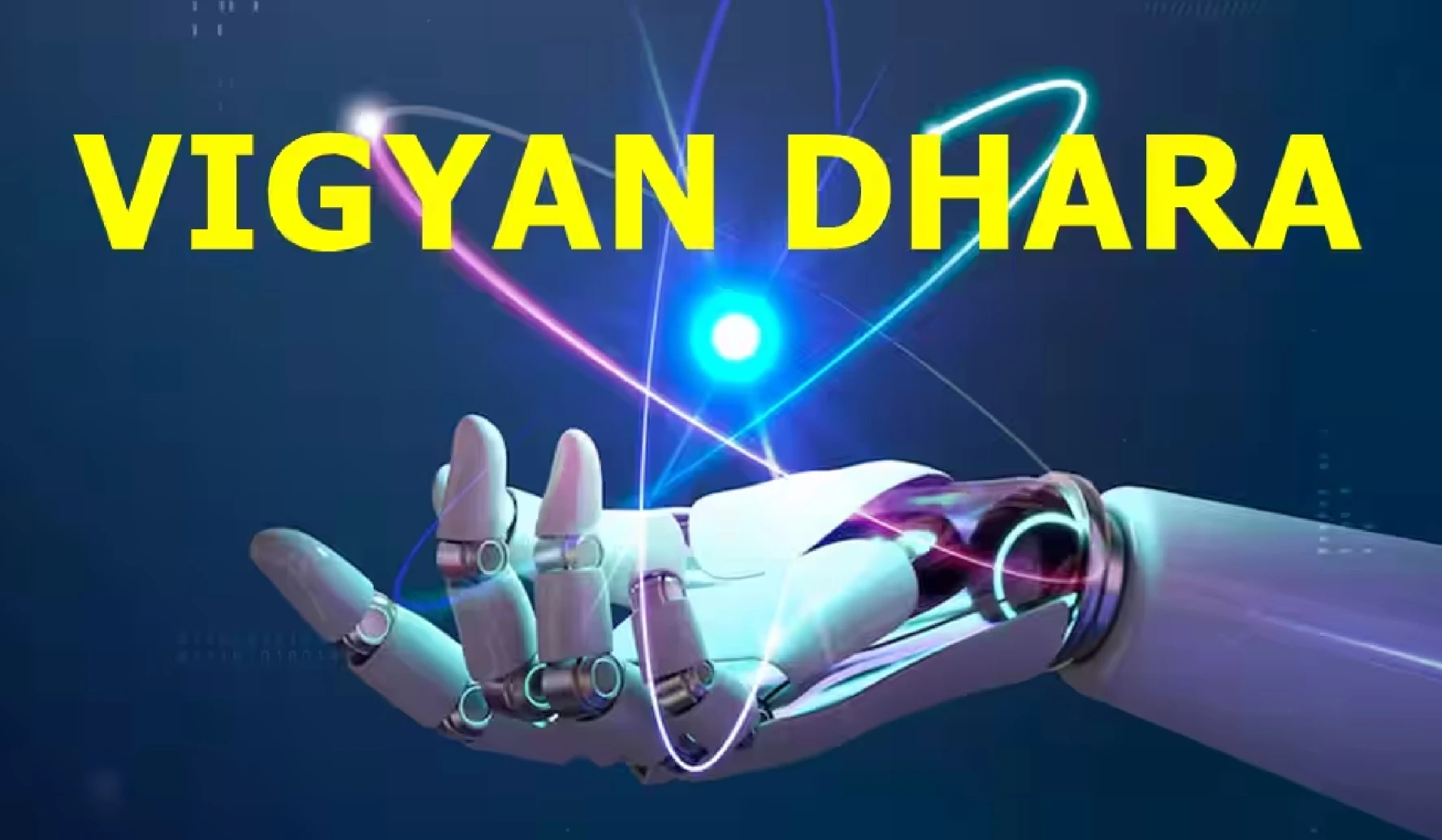Why in the News?
Union Cabinet has approved continuation of three umbrella schemes, into a unified scheme 'Vigyan Dhara' to enhance India's R&D ecosystem.
About Vigyan Dhara Scheme
- Nodal Ministry: Ministry of Science and Technology
- Key objective: To promote S&T capacity building as well as research, innovation and technology development towards strengthening the Science, Technology and Innovation ecosystem in the country.
- Type: Central Sector Scheme
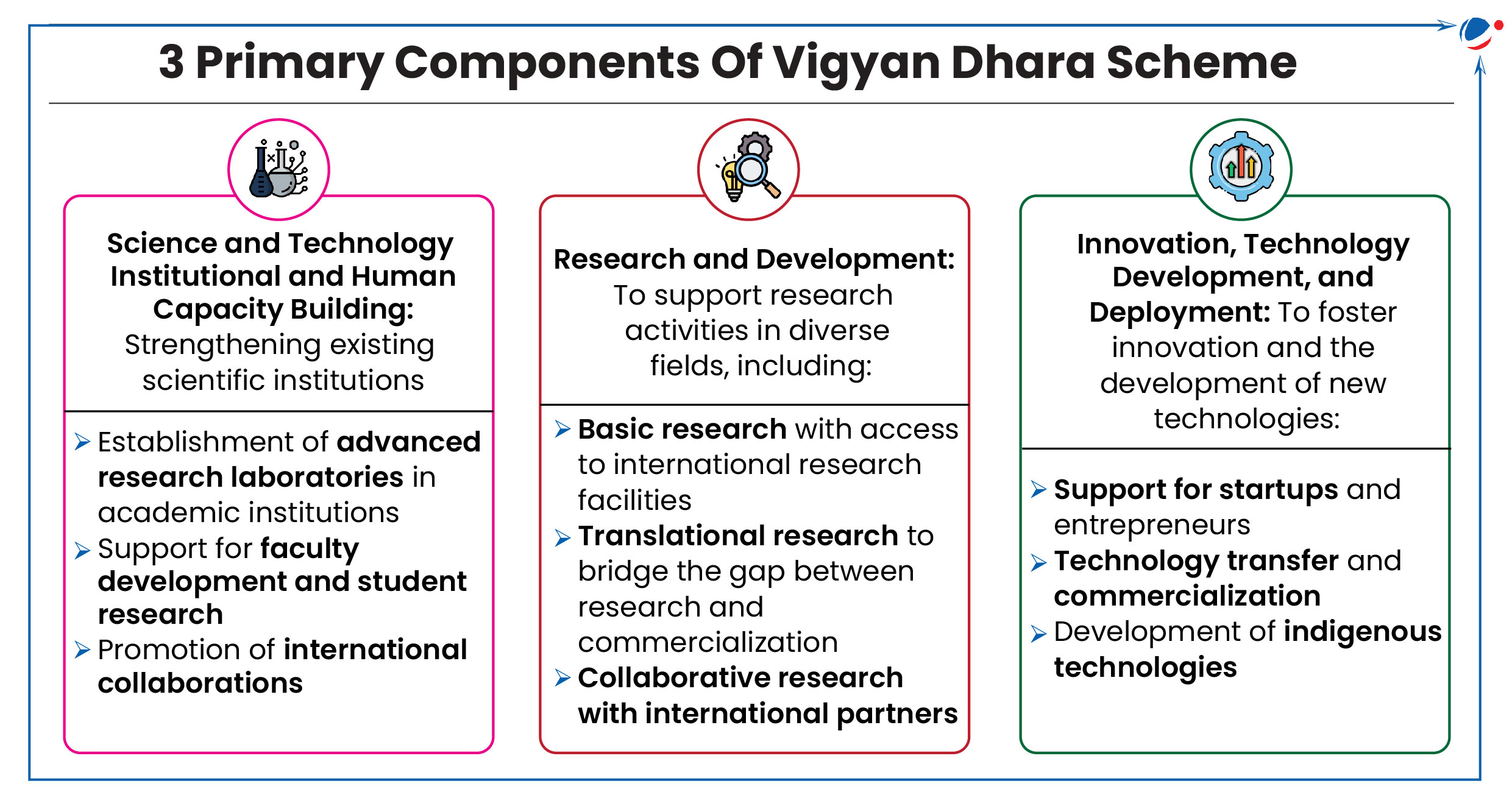
- Tenure: From 2021-22 to 2025-26 (15th finance Commission period)
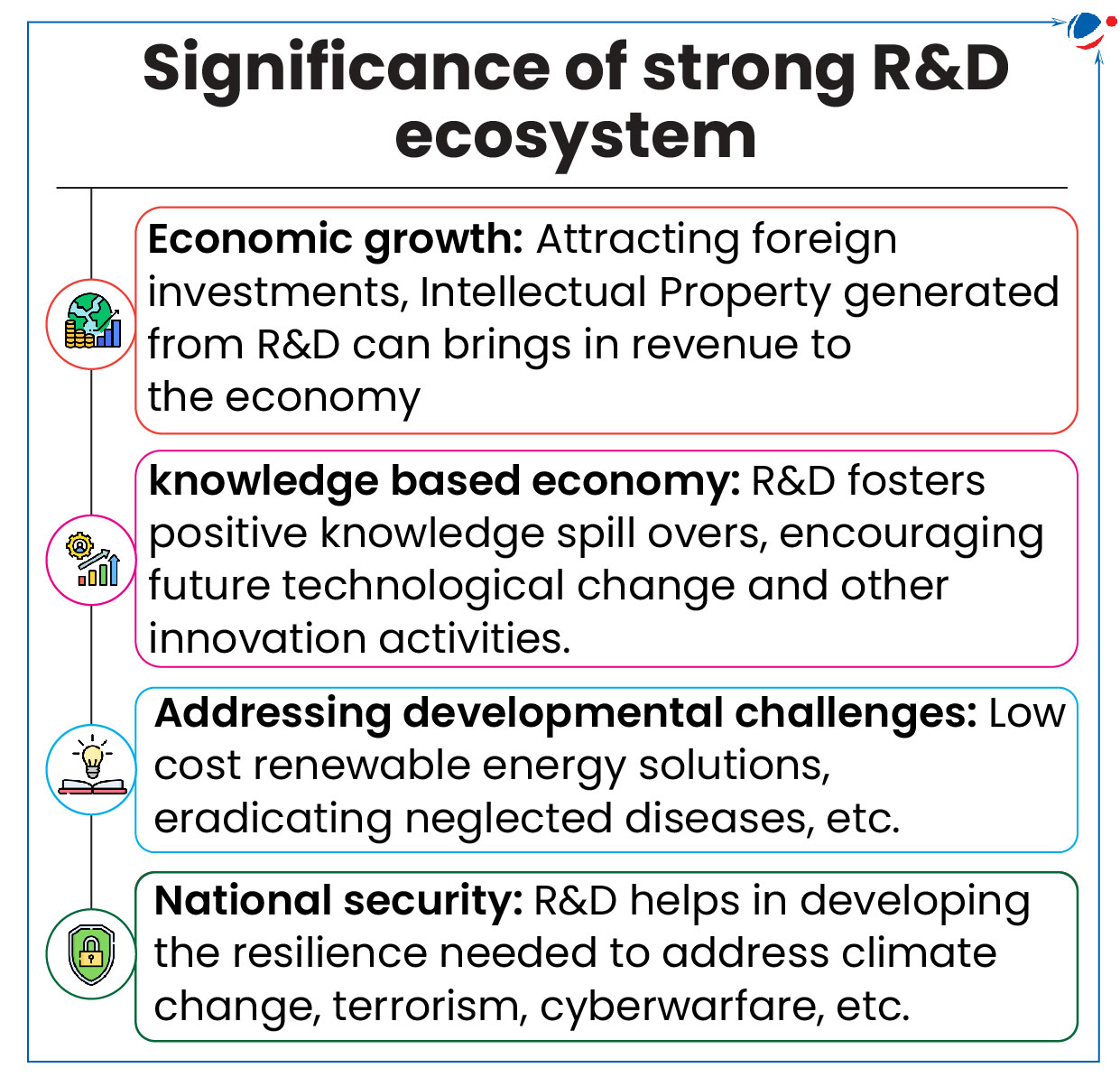
- Potential benefits:
- Building critical human resource pool to strengthen the science and technology landscape
- Expand the R&D base of the country towards improving the Full-Time Equivalent (FTE) researcher count.
- Focused interventions to enhance the participation of women in the field of Science and Technology (S&T) for bringing gender parity.
About India's R&D ecosystem
R&D activities can be defined as any systematic and creative work undertaken in order to increase the stock of knowledge and use of this knowledge to devise new applications.
- Presently, India ranks third worldwide in number of scientific publications and Scholarly Output (2020).
- India ranks 6th in number of patents filed (2022).
- India has achieved a significant milestone in Global Innovation Index (GII) 2024, securing 39th position among 133 global economies.
Challenges of India's R&D ecosystem
- Low budget: Percentage of GDP devoted to R&D in India is among the lowest in the world (0.6% - 0.7%)
- It is well below that in major nations such as the US (2.8), China (2.1), Israel (4.3) and Korea (4.2).
- Large scale Brain drain: A substantial number of India's best scientists and researchers migrate abroad for better opportunities leading to shortage of qualified human resource.
- In 2020, researchers per million inhabitants in India was only 260, in comparison to 1,602 in China (Budget 2024-25 analysis by PRS).
- Lack of inclusivity: Socio cultural norms and hurdles deter many sections of the society including women from actively participating in R&D activities, shrinking the talent pool.
- Challenges in translating research into successful technologies: Due to factors like Skewed focus towards basic research in comparison to application-oriented R&D, Weak Industry-Academia Collaboration etc.
- Persistent issues in India's educational system:
- Low student enrollment in advanced programs (total enrolment in Ph.D. stood at 2.12 lakh in 2021-22- as per All India Survey on Higher Education).
- Shortage of institutions offering research opportunities: Only 2.7% Colleges run Ph.D. programme and 35.04% Colleges run Post Graduate Level programmes.
- Inadequate monitoring or evaluation of R&D projects in educational institutes.
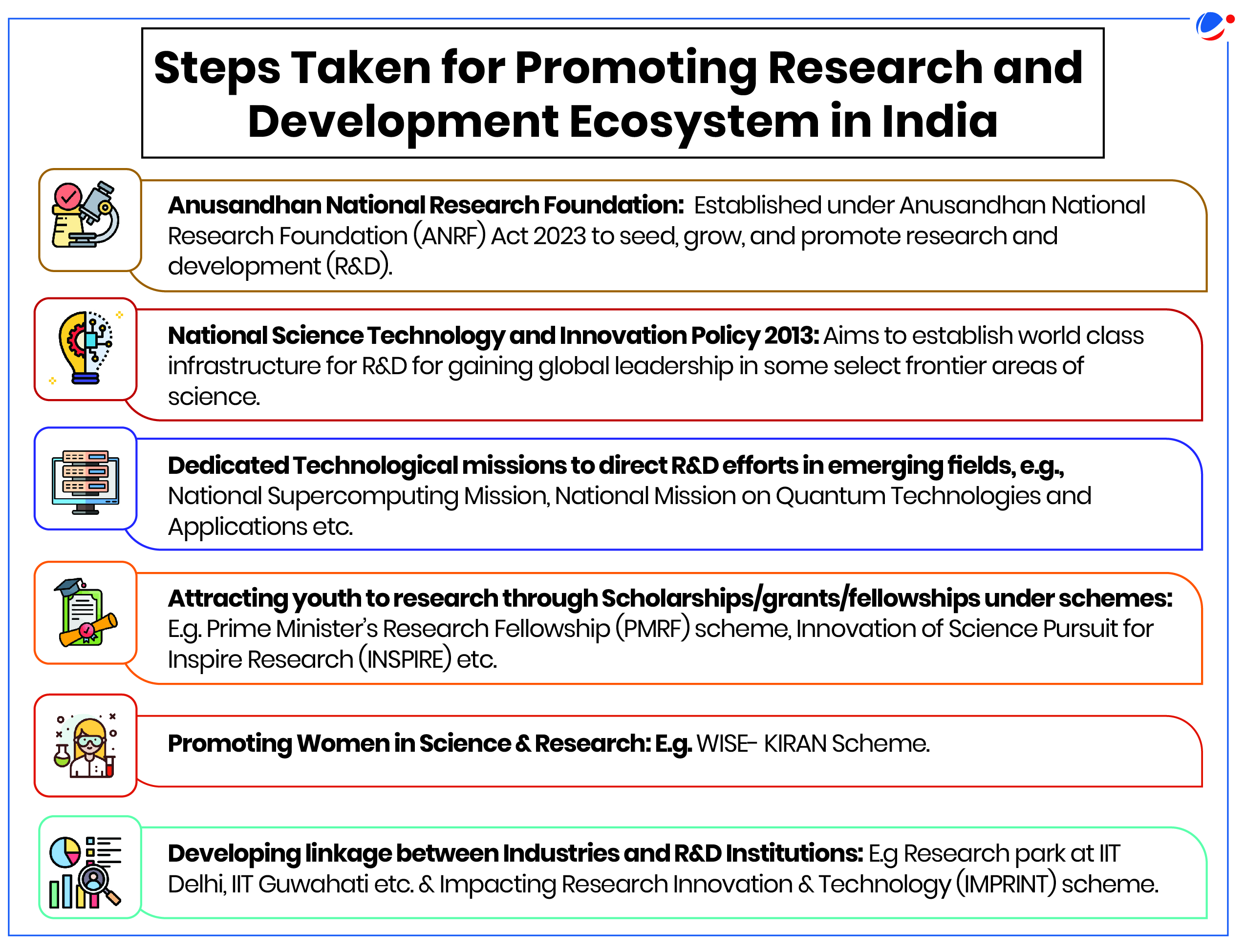
Way-forward for improving R&D ecosystem in India
It requires a multi-faceted approach addressing various aspects such as funding, infrastructure, policies and collaboration.
- Finance
- Increased funding: India as a nation should invest at least 2% of GDP in R&D by 2030.
- Private sector investments: Through joint investments by industry and government, establishment of PPP based incubators, Provision of incentives such as tax concessions with a sunset clause patent related incentive, etc.
- Infrastructure and collaboration: Establishing state-of-the-art laboratories and research centres is a crucial investment for advancing research infrastructure and driving progress.
- Innovation
- Intellectual Property Rights (IPR) protection: Although India granted over 100,000 patents in the financial year 2023-2024, many patents remain underutilized.
- This gap alludes to need for collaborative efforts between research institutions, industry associations and government agencies.
- Boost R&D culture in universities: Financial and decision-making autonomy to universities; aligning thrust areas of research with global/regional challenges; etc.
- R&D committee/cell can be established in universities; universities/institutes can be given special status in distinctive geographical regions; etc.
- Intellectual Property Rights (IPR) protection: Although India granted over 100,000 patents in the financial year 2023-2024, many patents remain underutilized.
- Collaboration for translation of research into technologies: Strategic partnerships and innovation clusters can be developed with multiple stakeholders including industry players, research organizations, institutions, associations, NGOs, government bodies.
- Investment in education and skill development: Reallocation of government funds with a greater share for basic and applied research in the premier educational institutions from the present 10%.
- Proper implementation of National Education Policy (NEP) 2020 which aims at creating a conducive ecosystem to catalyse and energize research and innovation in Higher Education Institutions would also improve R&D ecosystem




